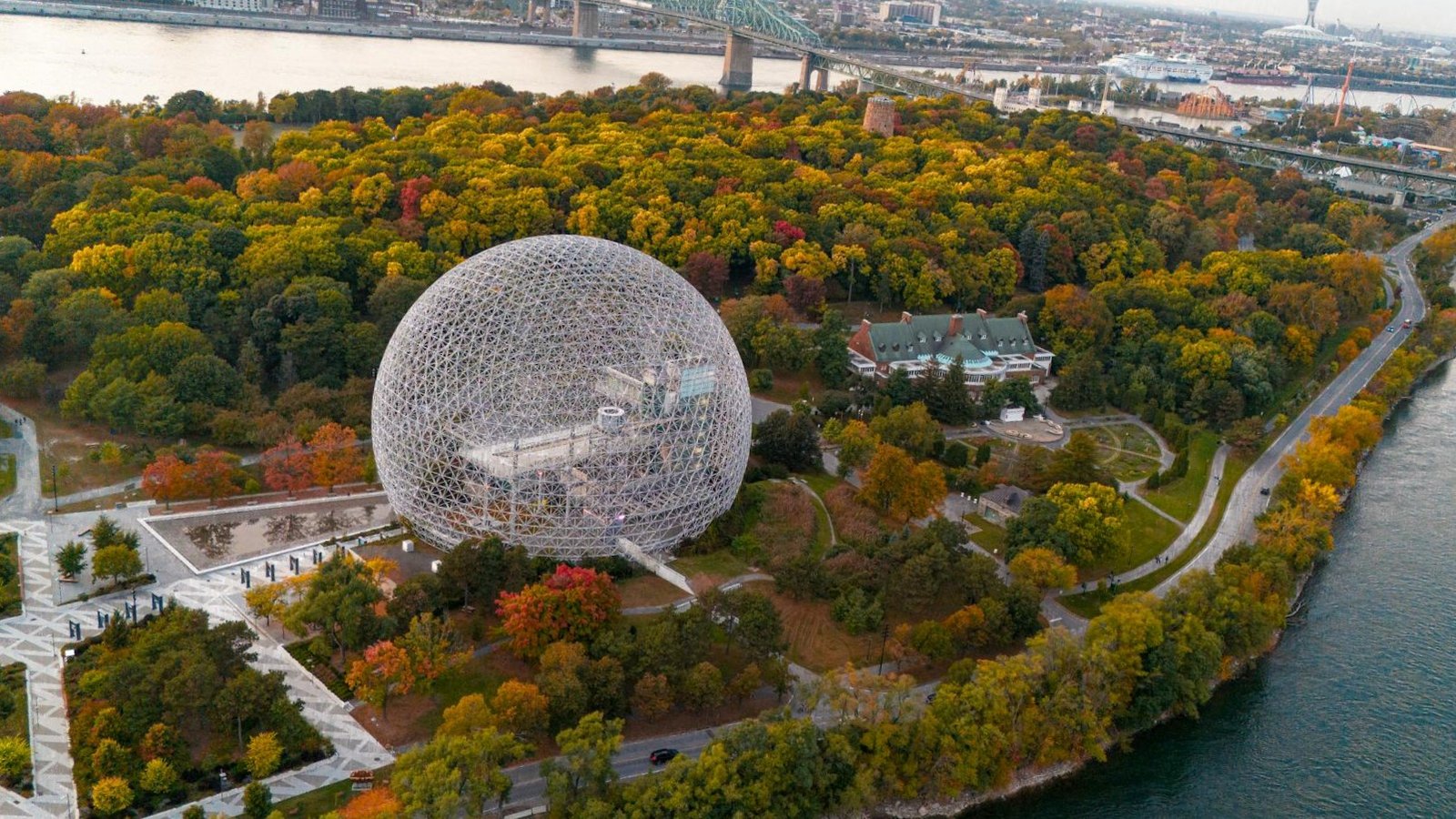Exploring the Great White North : Canada’s diverse landscapes, from the towering Rockies to the Atlantic coastline, offer an incredible array of experiences for every traveler. But as we embrace adventure, it’s also crucial to think about how we can travel responsibly. With climate change on the rise and overtourism impacting many destinations, eco-friendly travel practices are essential to preserving Canada’s beauty. These tips will help you enjoy the country’s wonders while treading lightly on the environment and supporting local communities. Let’s dive into some simple yet effective ways to travel sustainably across the Great White North!
Planning and Transportation: Getting There and Around
Travel During Shoulder Seasons
Canada’s peak travel season runs through the summer (June to August), which means large crowds, busy attractions, and sometimes sky-high prices. Consider visiting in the shoulder seasons, spring (April-May) or fall (September-October). Not only will you find fewer crowds, but you’ll also enjoy milder weather, and lower airfare, and the natural beauty of seasonal transitions. In the spring, many parts of Canada are bursting with wildflowers, while fall brings brilliant colors as the leaves change.
Go for the Train Experience
When it comes to long-distance travel in Canada, the train is a fantastic eco-friendly option. VIA Rail connects major cities across the country, offering scenic routes that allow you to experience Canada’s iconic landscapes without the environmental impact of flying. Whether you’re traveling from Toronto to Vancouver on the cross-country journey or hopping between cities like Montreal and Quebec City, trains offer a slower, more sustainable travel method while reducing your carbon footprint.
Use Buses and Rideshares for Shorter Journeys
For shorter distances, Canada’s intercity bus network is extensive and affordable. Buses like Greyhound and Megabus offer regular service between major urban areas like Toronto, Ottawa, and Montreal, allowing you to explore cities without the hassle of driving. If you’re traveling with a group or want a more flexible schedule, consider ridesharing through services like Kangaride or Carpool. These carpooling platforms match travelers with similar routes, cutting down on emissions while reducing transportation costs.
Opt for Fuel-Efficient or Electric Car Rentals
If driving is unavoidable, look for rental car options that prioritize fuel efficiency. Hybrid or electric cars are becoming more widely available in Canada, especially in major cities like Vancouver and Toronto. These vehicles significantly reduce your carbon footprint. Try to consolidate trips and carpool with fellow travelers to minimize the number of vehicles on the road. Canada’s car-sharing service, Turo, also offers electric vehicles for rent in several cities.
Accommodation: Choose Sustainable Stays
Stay in Eco-Lodges and Green Hotels
Canada is home to many eco-conscious lodges and hotels that emphasize sustainability through renewable energy, water conservation, and locally sourced products. Look for accommodations with certifications such as Green Key, which rates hotels based on their environmental initiatives, or LEED (Leadership in Energy and Environmental Design) certification for eco-friendly buildings. For example, the “Fogo Island Inn” in Newfoundland is renowned for its commitment to sustainability and community impact, offering guests a chance to explore nature while supporting local culture.
Support Local by Staying in B&Bs or Homestays
If you prefer a more personal experience, opt for bed and breakfasts (B&Bs) or homestays. These smaller accommodations not only offer a more intimate glimpse into Canadian life but also tend to have lower environmental footprints than large hotel chains. Staying in locally-owned B&Bs supports the local economy, and many offer organic breakfasts made from locally-sourced ingredients, like the Wild Goose Lake Bed & Breakfast in Northern Ontario.
Choose Accommodations with Minimal Waste Initiatives
When booking your stay, look for hotels or lodges that implement waste reduction programs. Many eco-friendly properties now avoid single-use plastic toiletries, provide filtered water stations for refills, and offer composting or recycling programs. Some hotels, like the Delta Hotels in Banff, even have “green housekeeping” initiatives where guests can opt out of daily room cleaning to conserve water and energy.
Activities and Experiences: Explore Nature Responsibly
Stick to Designated Trails and Campsites
Canada’s national and provincial parks are famous for their outdoor adventure opportunities, but it’s crucial to respect nature by staying on designated hiking trails and using official campsites. Whether you’re exploring Jasper National Park in Alberta or Gros Morne National Park in Newfoundland, make sure to adhere to the Leave No Trace principles. Avoid disrupting wildlife, and always clean up after yourself, even in remote areas.
Embrace Responsible Wildlife Viewing
Canada is home to spectacular wildlife, from bears and moose to whales and bald eagles. While it’s exciting to encounter these creatures, responsible wildlife viewing is critical. Always maintain a safe distance and never feed the animals, as human interference can alter their natural behaviors. If you’re joining a guided wildlife tour, choose operators who follow ethical wildlife practices and prioritize conservation efforts, such as Prince Rupert Adventure Tours in British Columbia, which offers sustainable whale-watching tours.
Take Part in Cultural and Eco-Friendly Tours
Many Canadian cities and rural regions offer tours focused on local culture and sustainability. When exploring cities like Montreal, look for guided walking or cycling tours that introduce you to the local history and culture without leaving a carbon footprint. If you’re more inclined to explore nature, consider eco-friendly adventure companies that offer kayaking, hiking, or bird-watching tours while minimizing environmental impact. In Nova Scotia, The Cape Breton Centre for Craft and Design offers workshops and tours that emphasize local craftsmanship and heritage.

Responsible Consumption: Mindful Spending and Waste Reduction
Pack Reusable Items
Packing light is always a good idea, but packing smart is even better. Bring reusable water bottles, shopping bags, and utensils to reduce your reliance on single-use plastics. Many Canadian cities, like Vancouver and Toronto, have banned plastic bags or straws, so having reusable alternatives is both practical and eco-friendly. Refillable water stations are common in airports, hotels, and parks, so it’s easy to avoid plastic bottles.
Shop at Farmers’ Markets and Support Local
Canada is a vast country with a strong focus on locally grown and produced goods. From fresh seafood on the Atlantic coast to organic fruits and vegetables from the Okanagan Valley, Canada’s farmers’ markets offer a wide variety of sustainable products. Supporting local food markets not only reduces the environmental impact of food transportation but also provides an authentic taste of regional cuisine. Try visiting the Halifax Seaport Farmers’ Market or Vancouver’s Granville Island Public Market to experience the best local flavors.
Eat Sustainably
Whether dining in a city or a rural area, opt for restaurants that source local ingredients and prioritize sustainability. In coastal regions like British Columbia or the Maritimes, look for restaurants offering sustainably sourced seafood. In larger cities, many eateries now focus on farm-to-table dining, offering fresh, seasonal dishes with minimal environmental impact. Try farm-to-table restaurants like “The Farmer’s Apprentice” in Vancouver or “Rhubarb Restaurant” in Ontario’s Muskoka region, which both emphasize local, organic ingredients.
Cultural Sensitivity and Respect
Acknowledge and Respect Indigenous Lands
Many of Canada’s parks and natural attractions are located on land traditionally inhabited by Indigenous peoples. When visiting these areas, research any specific guidelines, such as asking permission to access certain sites or following cultural protocols. In places like Banff and Jasper, there are opportunities to learn about the Indigenous history of the land through guided tours, helping to deepen your understanding and respect for the local culture.
Learn Basic French for Quebec
Although most Canadians speak English, learning a few basic French phrases can go a long way in the province of Quebec. Simple phrases like “Bonjour” (Hello) and “Merci” (Thank you) are greatly appreciated by locals, especially in smaller towns where English might not be as common. It’s a small gesture that shows respect for the local language and culture.
Leaving a Positive Impact: Small Changes, Big Results
By following these eco-friendly tips, you’ll contribute to protecting Canada’s pristine landscapes and supporting local communities. Whether you’re choosing sustainable transportation, eco-friendly accommodations, or packing reusable items, your small efforts will have a positive impact on the environment. Remember, sustainable travel isn’t just about reducing waste—it’s about fostering meaningful connections with the people and places you visit, ensuring that future generations can enjoy the beauty of Canada too.
Traveling sustainably doesn’t mean sacrificing adventure or comfort. Instead, it allows you to experience Canada more authentically, responsibly, and with a deeper understanding of what makes this country so special. Pack light, explore thoughtfully, and travel like a true Canadian!
FAQ: Quick Eco-Friendly Travel Tips
- What’s the best time to visit Canada?
- Can I travel by train in Canada?
- Are there eco-friendly hotels in Canada?
- How can I reduce plastic waste while traveling?
- What’s the best way to explore Canadian cities?
- Why is Canada referred to as the Great White North?
Canada is often called the Great White North due to its vast northern geography, cold climate, and snowy landscapes. The nickname reflects the country’s expansive Arctic regions, long winters, and iconic imagery of snow-covered terrain. Additionally, Canada’s identity as a northern nation, with its pristine wilderness and icy beauty, has made the term a fitting and enduring descriptor.
- What is the nickname of Canada?
Canada’s most common nickname is the Great White North, reflecting its northern geography, snowy landscapes, and cold climate. Other nicknames include the True North (from the national anthem) and the Land of Maple Leaf, highlighting its iconic symbol.



